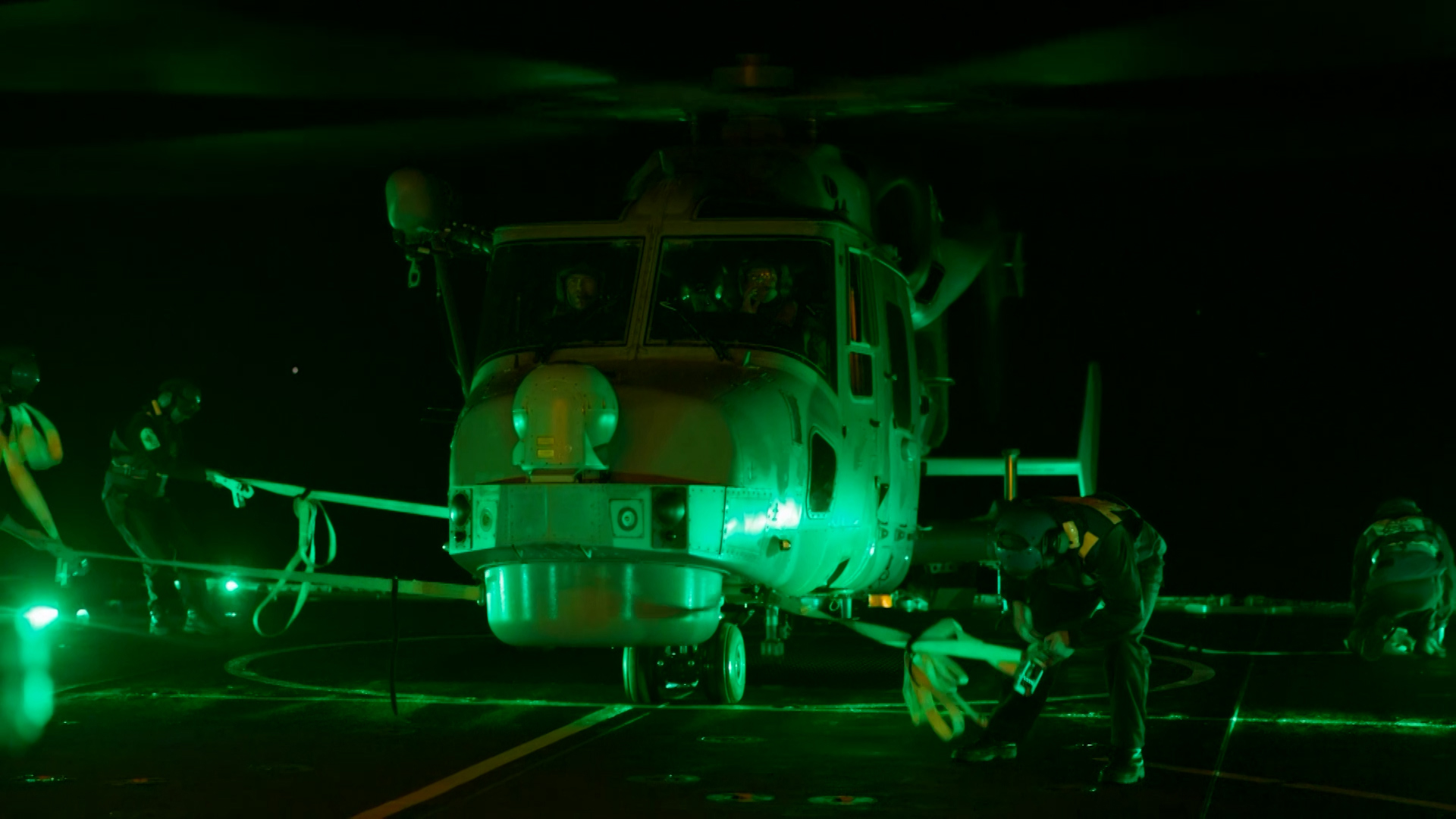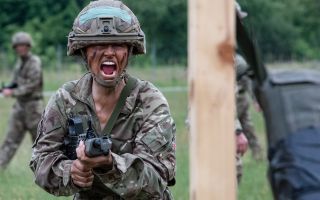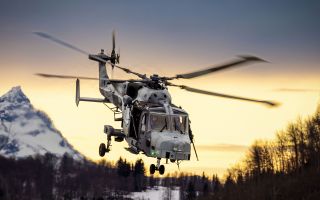Happy landings: Rough seas and night-time no problem for Wildcats on HMS Trent
HMS Trent has been testing a new system which should make it much easier and safer for helicopters to land in rough weather and at night.
Imagine this: the sound of a Wildcat helicopter coming in to land on the offshore patrol vessel.
It's dark, but all around the edge of the deck, there are bright green lights.
The lights are part of a new system called the Helicopter Visual Landing Aid System, or HVLAS.
There are lasers indicating where to land, as well as a bar of lights that has a neat trick.
The lightbar is controlled by a gyroscope, so the incoming helicopter pilot can see the angle of the deck as they come into land in rough seas and judge their touch-down accordingly.
The lights can be used alongside night vision goggles worn by the aircrew, meaning landings can be more covert with less visible light giving away the position of either the vessel or the helicopter.
They can also be dimmed or made brighter, and this means helicopters from partner nations will find it much easier to land.

A range of helicopters up to the size of a Merlin can land on the flight deck of the offshore patrol vessel.
The trial on HMS Trent has proved successful, and the lighting rig is now being installed on HMS Spey before being rolled out across the batch 2 River-class fleet.
HMS Trent will be putting it to the test for real when she deploys to the Caribbean in the autumn.









